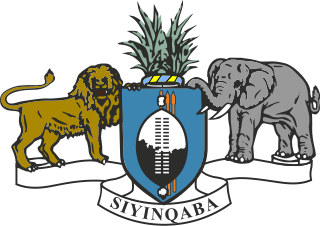Lugongolweni is an inkhundla of Eswatini, located in the Lubombo District. Its population at the 2007 census was 15,519. [1] It is divided into four umphakatsi, or chiefdoms: Ka-Langa, Makhewu, Mlindazwe, and Sitsatsaweni. [2]

In Eswatini, an inkhundla is an administrative subdivision smaller than a district but larger than an umphakatsi. There are 55 tinkhundla in Eswatini: 14 in Hhohho District, 11 in Lubombo District, 16 in Manzini District, and 14 in Shishelweni District. According to the constitution of Eswatini, the government for Eswatini is a democratic, participatory, tinkhundla-based system that emphasizes devolution of state power from central government to tinkhundla areas and individual merit as a basis for election or appointment to public office. The system is non-partisan since the constitution does not recognize political parties, although section 25 of the constitution allows for open freedom of assembly and association. Each inkhundla elects one representative to the House of Assembly of Eswatini, the lower chamber of the bicameral parliament (Libandla). The same trend is applied in local government elections. This governing system was designed by King Sobhuza II with the assistance of political scholars and lawyers. It came to effect in 1978 and was adjusted in the early 1990s.

Eswatini, officially the Kingdom of Eswatini and also known as Swaziland, is a landlocked country in Southern Africa. It is bordered by Mozambique to its northeast and South Africa to its north, west and south. At no more than 200 kilometres (120 mi) north to south and 130 kilometres (81 mi) east to west, Eswatini is one of the smallest countries in Africa; despite this, its climate and topography are diverse, ranging from a cool and mountainous highveld to a hot and dry lowveld.

In Swaziland, an umphakatsi is an administrative subdivision smaller than an inkhundla; there are 360 imiphakatsi in the country, each approximately equivalent to a local community. In western societies it could be also equivalent to a township. Imiphakatsi are either Royal villages with a Royal kraal or chief residences which are administered under a Swazi chief or a Royal prince through Swazi Law and Custom. The official residence of the Ndlovukati at Ludzidzini is also designated an umphakatsi.

